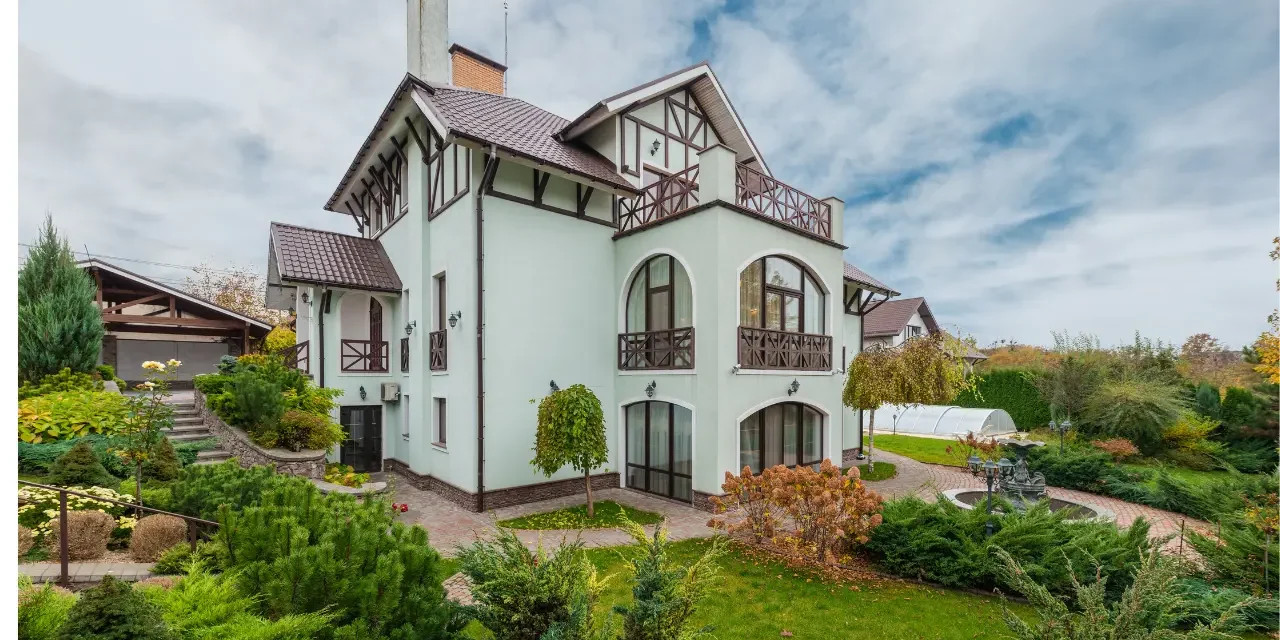Have you ever dreamed of walking out your back door and picking fresh veggies, herbs, or fruits straight from your garden? If so, starting a homestead garden might be just what you’re looking for.
More and more people are turning to backyard gardening to become a little more self-reliant, save money on groceries, and enjoy fresh, organic produce. But the idea of starting your own homestead garden from scratch can feel overwhelming, especially if you’re new to gardening or don’t have a ton of space.
The good news? You don’t need to be a master gardener to get started. With a bit of planning and some patience, you can build a productive garden that fits your lifestyle, yard, and even your balcony.
In this step-by-step guide, we’ll walk you through the essentials of how to start a homestead garden, one step at a time, in everyday language that anyone can follow. Whether you’re dreaming of growing tomatoes, herbs, or an entire backyard food forest, we’ve got you covered.
What Is a Homestead Garden?
A homestead garden is more than just a patch of soil with a few plants. It’s a garden with a purpose—typically aimed at producing food for your household, reducing reliance on store-bought produce, and building a more self-sufficient lifestyle.
Homestead gardens can vary in size and style. Some people grow in small raised beds, while others use large plots of land or mix in chickens and composting to create a full-blown homesteading system. But no matter the size, the goal is the same: to grow your own food and connect with nature.
Why Start a Homestead Garden?
Here are just a few reasons why homesteading is gaining popularity:
- Save money on groceries over time.
- Know exactly what you’re eating—no pesticides or harmful chemicals.
- Improve your health by eating more fresh, nutrient-rich produce.
- Use up more of your food and help protect the Earth at the same time.
- It feels amazing to see the plants you’ve grown start to bloom and grow strong.
Still unsure? Imagine picking sun-ripened tomatoes for dinner or harvesting lettuce just before lunch. It’s deeply satisfying—and surprisingly doable.
Steps to Start a Homestead Garden
Step 1: Start with a Plan
Before grabbing a shovel, take some time to think through what you want from your garden. Ask yourself:
- How much space do I have?
- What kind of food do I want to grow?
- How much time can I commit each week?
- Do I want to grow year-round or seasonally?
Sketch out a simple layout of your yard or space. Note where the sun hits during the day, where water sources are, and what areas have good drainage.
Pro tip: Start small! It’s better to have a small, manageable garden that thrives than a large, overwhelming one that struggles.
Step 2: Choose the Right Location
Most vegetables need 6–8 hours of sunlight each day, and getting enough of it is the first step to a thriving garden.
Look for a spot that:
- Gets plenty of sunlight.
- Has easy access to water.
- Is protected from strong winds and potential animal intruders.
- Drains well (no standing puddles after rain).
If you don’t have yard space, don’t worry! Balcony containers, vertical gardens, and even sunny windowsills can be turned into mini homestead gardens.
Step 3: Prepare Your Soil
Healthy soil = healthy plants.
You’ll want soil that’s:
- Loose and well-draining.
- Rich in organic matter.
- Balanced in pH (usually between 6.0 and 7.0 for most veggies).
To get started:
- Clear away any grass or weeds from the spot.
- Loosen the soil to a depth of about 8 to 12 inches so the roots can spread out and grow easily.
- Add some compost or old manure to make the soil rich and ready for planting.
Optional but helpful: Test your soil with a basic kit to understand its pH and nutrient levels. It can help you make better choices about what to grow and what to amend.
Step 4: Decide What to Grow
For beginners, it’s best to start with easy-to-grow, high-yield crops. Think about what your family actually eats and choose accordingly.
Great starter crops include:
- Tomatoes
- Lettuce and leafy greens
- Cucumbers
- Green beans
- Zucchini
- Herbs like basil, parsley, and mint
Mix in a few perennial plants (like strawberries or asparagus) if you want a long-term harvest.
Keep in mind your growing season and USDA plant hardiness zone. This will help you decide which crops thrive in your region and when to plant them.
Step 5: Pick a Gardening Method
You don’t have to garden the old-fashioned way with rows in the ground. Here are a few popular methods for homestead gardening:
- Raised beds: Great for small spaces, easier to manage, and good for poor soil conditions.
- Container gardening: Perfect for patios or balconies.
- In-ground beds: Traditional and cost-effective, but may require more weeding.
- No-dig gardening: A simple way to keep your soil healthy without all the hard digging.
Choose what works for your space, time, and budget.
Step 6: Plant Your Garden
When it’s time to plant, follow seed packet instructions carefully. Here are some simple tips to keep in mind when planting:
- Don’t plant too deep or too shallow.
- Make sure to leave enough space between plants so they can grow freely and stay healthy.
- Water gently but thoroughly after planting.
- Put mulch around your plants to help keep the soil moist and keep weeds away.
If you’re starting from seed indoors, give yourself a head start 4–6 weeks before the last expected frost. Move your plants outside when the weather becomes warm and safe for them to grow.
Step 7: Water, Weed, and Watch
Now, the fun part—caring for your garden.
Here’s what to keep in mind:
- Water consistently, especially in the early stages. Morning watering is best.
- Weed regularly so your plants don’t have to compete for nutrients.
- Monitor for pests and diseases. Hand-pick bugs or try organic solutions like neem oil.
- Pick your crops regularly to help them grow more and enjoy fresh food all the time.
Make it a habit to spend a few minutes in your garden each day. You’ll catch problems early and enjoy the calming benefits of being in nature.
Step 8: Learn and Grow with Your Garden
Your first year won’t be perfect—and that’s okay. Every gardener has successes and setbacks. Keep a notebook or journal to track what you planted, how it grew, and what you’d do differently next time.
Over time, you’ll develop your own rhythms and preferences. You might even add chickens, bees, compost bins, or expand to a food forest. The sky’s the limit when it comes to building your homestead dreams.
Final Thoughts
Starting a homestead garden is one of the most rewarding steps you can take toward a healthier, more self-reliant lifestyle. With a bit of planning, some basic tools, and a willingness to learn, anyone can grow their own food—whether you have a few containers or a full backyard.
So don’t wait for the “perfect” time. Start small, dig in, and enjoy the journey. You might be amazed at how much you can grow with just a bit of care and attention.
Ready to get started? Check out more beginner gardening guides and free printables to help you plan your first successful season!
To explore how trees and crops can work together on your land, check out our guide on Agroforestry: Benefits and the Role of Homestead Agroforestry.
Frequently Asked Questions (FAQ) About Starting a Homestead Garden
Q1: What is a homestead garden?
A homestead garden is a purposeful garden designed mainly to grow food for your household. It focuses on self-sufficiency, organic growing, and reducing dependency on store-bought produce.
Q2: Is it possible to begin a homestead garden even if I’ve never gardened before?
Yes, absolutely! Homestead gardening is beginner-friendly. With some planning, simple tools, and patience, anyone can start growing food—even without prior experience.
Q3: Is a large yard necessary to begin a homestead garden, or can I start small?
You don’t need a large yard to begin—a few pots on a balcony or a small raised bed can be enough. The best garden size is one that fits your space, schedule, and how much effort you’re ready to invest.
Q4: What are some beginner-friendly vegetables to grow in a homestead garden?
Beginner-friendly vegetables include tomatoes, lettuce, cucumbers, green beans, zucchini, and herbs like basil and mint. These grow easily and produce well with basic care.
Q5: Can I start homestead gardening without a backyard?
Even without a backyard, you can start a homestead garden using containers, vertical planters, window boxes, or a balcony garden.
Q6: What are some effective ways to improve soil quality in a homestead garden?
Enrich your soil by adding compost, aged manure, and organic matter. Also, test your soil’s pH and nutrients to ensure it’s suitable for growing vegetables.
Q7: What is the ideal time of year to begin a homestead garden?
Spring is usually ideal, but the timing depends on your local climate and growing zone. You can also begin by planting seeds indoors several weeks ahead of the final frost date to give your plants a strong head start.
Q8: How often should I water my garden?
Aim to water your garden regularly, providing around one inch of water per week for healthy plant growth. Early morning watering is best to prevent disease and reduce evaporation.
Q9: Is it possible to grow food year-round in a homestead garden?
Yes, depending on your climate. With planning, cold frames, greenhouses, or indoor growing setups, you can extend your growing season or garden year-round.









